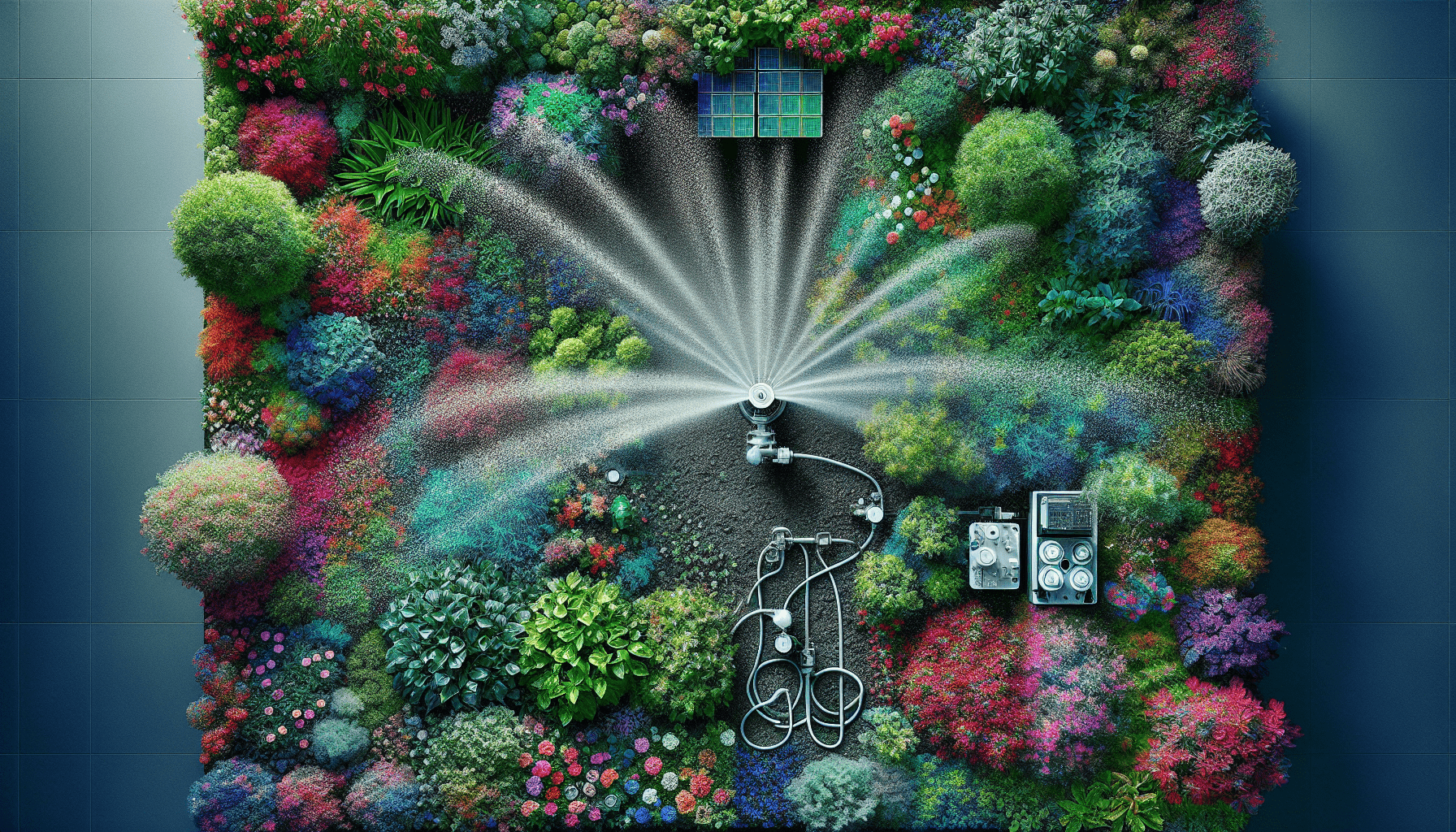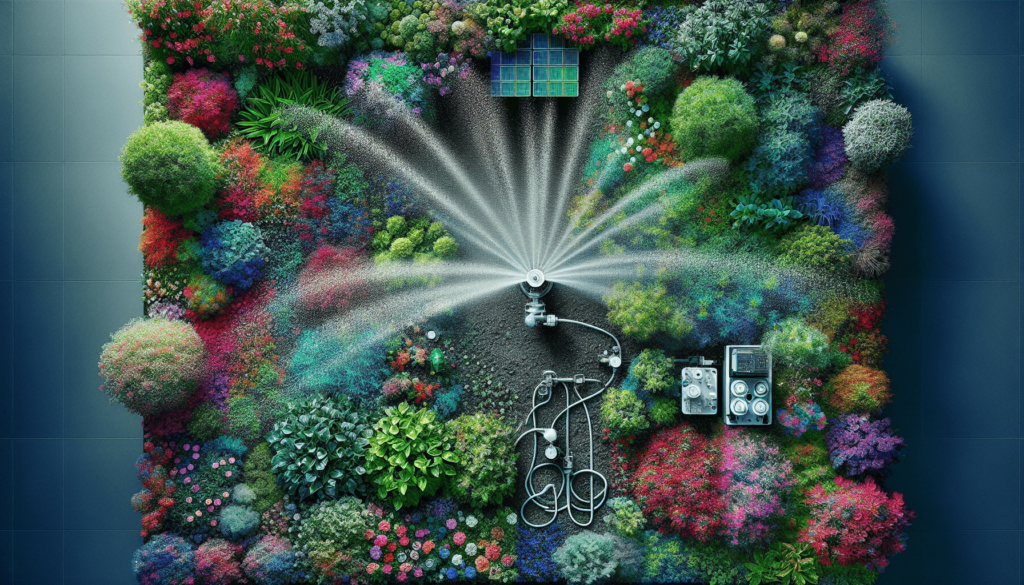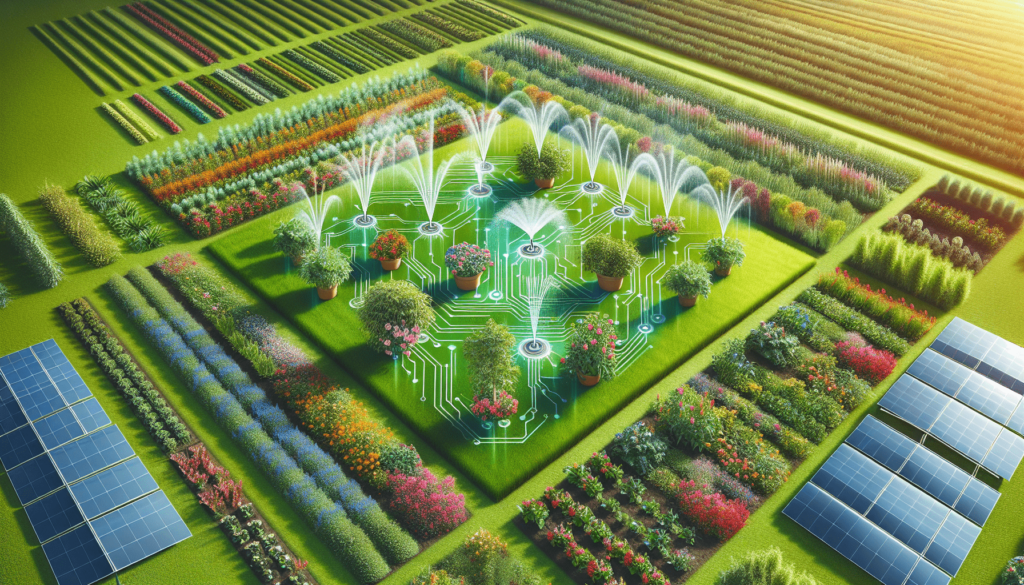
Imagine the convenience of having your garden on autopilot, where the process of irrigation is seamlessly integrated and automatic, driven by innovative technology. The smart irrigation systems does exactly that—it revolutionizes your garden’s water management process. This means no more worries about forgetting to water your plants or overwatering them. You simply set it up, and it takes care of the rest, saving you time and conserving valuable water resources. Now that’s a sustainable solution for your garden! Explore more about how these intelligent systems work and the myriad ways they can transform the way you handle your garden’s water needs.

Understanding smart irrigation systems
You might already have heard of smart irrigation systems, but what exactly are they? Let’s find out!
Definition of smart irrigation systems
Simply put, smart irrigation systems are tech-savvy watering systems designed to water your lawn or garden efficiently. These systems use weather and soil data to automatically adjust watering schedules, ensuring optimal irrigation while minimizing water wastage.
Basic components of a smart irrigation system
So what does a smart irrigation system comprise? Generally, they consist of a controller (which functions as the brain of the system), sensors (that collect soil and weather data), and water distributors (like sprinklers or driplines). These components interact seamlessly, ensuring your plants get the right amount of water at the right time.
How smart irrigation systems work
The workings of a smart irrigation system are quite interesting. The sensors continuously monitor soil moisture and weather conditions. This data is sent to the controller, which uses it to adjust watering schedules accordingly. So, if it’s about to rain, your system might delay watering. Or, if the soil is already moist, it could reduce watering to prevent waterlogging.
The efficiency of smart irrigation systems
Smart irrigation systems are not just an innovative novelty. Their efficiency has practical benefits too that you might want to consider.
Save water and the environment
One of the biggest benefits of these systems is they significantly cut down on water usage. By watering your greens only when necessary, they prevent unnecessary water wastage. In times of increasing water scarcity, this could be a significant step towards conservation.
Save time and effort
Gone are the days of manual watering! With a smart irrigation system, you can set it and forget it. The system will take care of the rest, saving you time and effort.
Reduce utility bills
As a bonus, the water savings translate to reduced utility bills. So consider these systems a smart investment that would pay for itself over time.
Enhance plant growth and lawn health
When accurate watering schedules are maintained, your plants will thrive, and your lawn will be healthier. Overwatering and underwatering can both harm plant growth. These systems ensure plants get just the water they need.
Types of smart irrigation systems
Depending on your need and preference, you can choose from several types of smart irrigation systems.
Weather-based irrigation controllers
These are systems that use local weather data to determine watering schedules. If the forecast predicts rain, they might delay watering.
Soil moisture sensors
These systems have sensors that measure the moisture content in your soil. They only water the garden when the soil moisture drops below a certain level, ensuring optimal watering without wastage.
Drip irrigation systems
These are quite effective for saving water. They deliver water directly to the root zone of the plants, ensuring maximal absorption while minimizing loss due to evaporation.
Sprinkler controllers
These systems typically replace your traditional sprinkler timers. They use weather data and other inputs to determine the ideal watering schedule for your lawn or garden.

The role of technology in smart irrigation systems
With advancements in technology, the capabilities of smart irrigation systems have truly flourished.
IoT and smart irrigation systems
Internet of Things (IoT) has played a significant role in the evolution of smart irrigation systems. With IoT, your irrigation system can be connected to the internet and controlled remotely, giving you the option to adjust your watering schedules at the touch of a button.
Use of AI in predicting weather patterns
Artificial Intelligence (AI) has significantly improved the accuracy of weather predictions. This, in turn, allows smart irrigation systems to plan and adjust watering schedules more precisely, making them remarkably efficient.
Integration with smart home systems
Many smart irrigation systems are now compatible with popular smart home systems. This means you can control your irrigation system just like you control other smart devices in your home, often using a central hub or even voice commands.
How to choose the right smart irrigation system for your garden
Several considerations go into choosing the right smart irrigation system for your garden.
Consider your garden’s size and type
If your garden is small, a simple drip system might suffice. However, for larger lawns or varied plant types, you might require a more advanced system that can cater to different watering needs.
The climate of your area
If you live in an area prone to erratic weather patterns, you might profit from a system that uses real-time weather data to adjust watering schedules.
Your budget
Just like any other purchase, your budget plays a crucial role. However, remember to not just consider the initial cost but also potential savings in water bills over time.
Ease of installation and use
Also, consider how easy the system is to install and use. Some systems can be installed as a DIY project while others might require professional installation. Similarly, some systems have user-friendly control interfaces while others can be more complicated.
The installation process of smart irrigation systems
The installation of smart irrigation systems is relatively straightforward, usually involving the following steps:
Planning the layout
The first step involves planning the layout of the system, considering factors like plant types, soil conditions, and water pressure in your area.
Installation of the control unit
Next, the control unit, which is essentially the brain of the system, is installed. This is usually mounted on a wall in a secure location.
Connecting the valves and irrigators
Following this, the valves and water distributors (like sprinklers or drip lines) are connected. They are laid out as per the planned layout.
Testing the system
Lastly, the system is switched on to check its functioning. The watering schedules are adjusted, and the sensors’ sensitivity can be calibrated as needed.
Maintaining your smart irrigation system
Like any other system or equipment, a smart irrigation system also needs regular maintenance to function optimally:
Regular cleaning of the system
Regular cleaning is essential to remove any dust or debris that might accumulate, affecting the system’s performance or even causing damage.
Checking and adjusting controllers regularly
The controller settings should regularly be checked and adjusted, if needed, to maintain optimal watering schedules.
Replacing broken components promptly
If any component of the system gets damaged, it should be promptly replaced to prevent any disturbance in the watering schedules.
Best practices for using smart irrigation systems
Once you start using a smart irrigation system, there are some best practices you should follow to make the most of it:
Avoid overwatering
Always make sure your system is not overwatering your greens. Not only does it waste water, but it can also be harmful to plant health.
Utilize the weather data feature
If your system comes with a weather prediction feature, make sure you use it. It can significantly improve water efficiency and plant health.
Regular system audit and adjustment
Regularly auditing the system – its watering schedules, sensor sensitivity, and more – ensures that it keeps functioning at its best.
Top brands of smart irrigation systems
Several reputable brands offer smart irrigation systems:
Rachio
Rachio, known for its user-friendly smart controllers, is popular among homeowners.
Rain Bird
Rain Bird offers a wide range of weather-based irrigation controllers and is adored for its durability and reliability.
Netatmo
Netatmo is praised for its soil moisture sensors that ensure accurate watering to prevent wastage.
Hunter
Hunter’s products cater to different watering needs and are applauded for their versatility and performance.
Conclusion: The future of water management in gardening
With increasing water scarcity, the importance of efficient water management cannot be overstressed, and smart irrigation systems could play a crucial role in this:
Increasing adoption of smart irrigation systems
As more people realize the benefits of these systems, their adoption is on the rise. They’re not just being used in homes but also in community gardens, farms, and public landscapes.
Continued technological advancements
With continuous strides in technology, smart irrigation systems are set to become even more efficient and versatile, opening up new possibilities.
Sustainable farming and landscaping practices
As part of sustainable farming and landscaping practices, the usage of smart irrigation systems can help in water conservation and contribute to a healthier environment.
In conclusion, smart irrigation systems could revolutionize how we water our greens. Whether you’re a seasoned gardener or a novice, these systems could make your gardening journey more efficient and enjoyable.
